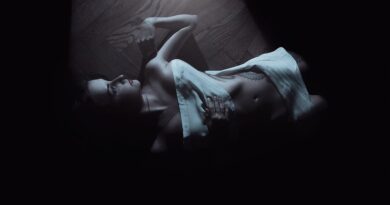A look back at the evolution of women’s fashion in the USA
Fashion has always been a way for people to express themselves and showcase their individuality. It is not surprising that fashion trends have changed over the years, as societal norms and expectations have shifted. In the United States, women’s fashion has undergone a significant evolution, reflecting the changes in culture, politics, and technology. Here is a look back at the evolution of women’s fashion in the USA.
1800s: The Victorian Era
The Victorian Era, which lasted from the 1830s to the 1900s, was characterized by women’s fashion that focused on modesty, elegance, and femininity. Women wore long, flowing dresses with voluminous petticoats, corsets, and bustles to enhance their curves. The fabrics used were heavy, such as wool, silk, and lace, with intricate embroidery and beadwork. Women were expected to wear hats or bonnets and gloves when venturing out in public.
1900s: The Flapper Era
The 1920s were marked by the rise of flapper culture, which celebrated women’s independence and liberation from traditional gender roles. The iconic flapper dress was characterized by shorter hemlines, dropped waists, and straighter silhouettes. Women experimented with bolder colors, intricate beading, and fringe embellishments. The use of accessories like headbands, cloche hats, and fur stoles became popular during this time.
1930s: The Great Depression Era
The 1930s were a challenging time for women’s fashion, as the Great Depression left limited resources for fashion. Hemlines went back down to ankle-length, and dresses became more conservative and practical. Fabrics became more affordable, and synthetic materials such as rayon and nylon became popular. Women’s fashion was heavily influenced by Hollywood celebrities, and the “Gone with the Wind” look, featuring ruffled skirts and fitted bodices, became a trend.
1940s: The War Years
World War II had a significant impact on women’s fashion, as women were required to work in factories to support the war effort. Utility clothes, designed with practicality and functionality in mind, became popular. Dresses were shorter, and pants became a staple in women’s fashion. Women still took care to accessorize, with chunky jewelry and scarves.
1950s: The Post-War Era
The 1950s marked a return to femininity and glamour. Women’s fashion focused on emphasizing curves with cinched waists, pencil skirts, and full skirts with crinoline underskirts. The “New Look,” popularized by French designer Christian Dior, emphasized the hourglass figure with full skirts and fitted bodices. The use of bold colors, prints, and elaborate detailing became popular again.
1960s: The Mod Era
The 1960s marked the rise of youth culture and rebellion against traditional gender roles. Women’s fashion became more androgynous, with shorter hemlines and minimalistic silhouettes. The mod look featured geometric shapes, bold colors, and the use of synthetic materials like PVC and vinyl. Accessories such as go-go boots, sunglasses, and Mary Janes became popular.
1970s: The Hippie Era
The 1970s marked a shift towards bohemian style, popularized by the hippie movement. Women’s fashion became more relaxed and free-spirited, featuring maxi dresses, bell bottoms, and platform shoes. The use of natural materials like hemp and cotton became common, and prints like paisley and tie-dye were popular. Accessories such as fringe bags, headbands, and peace sign jewelry became trendsetting.
1980s: The Power Suit Era
The 1980s marked the rise of corporate culture, and women’s fashion was influenced by the “power suit” trend. Women wore tailored blazers with shoulder pads, paired with matching skirt or pant suits. Bright colors, bold prints, and chunky jewelry were the norm. Accessories such as black stockings, high heels, and briefcases conveyed a message of authority and professionalism.
1990s: The Grunge Era
The 1990s marked a return to more casual, grunge-inspired fashion. Flannel shirts, ripped jeans, and combat boots became popular, reflecting a desire to break away from traditional societal norms. Women’s fashion became more gender-neutral, featuring oversized silhouettes and androgynous styles.
2000s: The Digital Era
The 2000s saw a rise in online shopping and social media, influencing women’s fashion to become more individualistic and fast-paced. Fast fashion became a trend, with a focus on affordability and trendiness. Women experimented with styles from different decades, combining the old with the new. The use of athleisure wear, featuring yoga pants, sneakers, and sporty jackets, became a popular trend.
In conclusion, women’s fashion in the United States has undergone significant changes over the years, reflecting the shifting norms and values of American society. Women have used fashion as a way to express themselves, to assert their independence, and to break away from traditional societal roles. As we move towards a more inclusive and diverse society, it will be interesting to see how women’s fashion continues to evolve.








